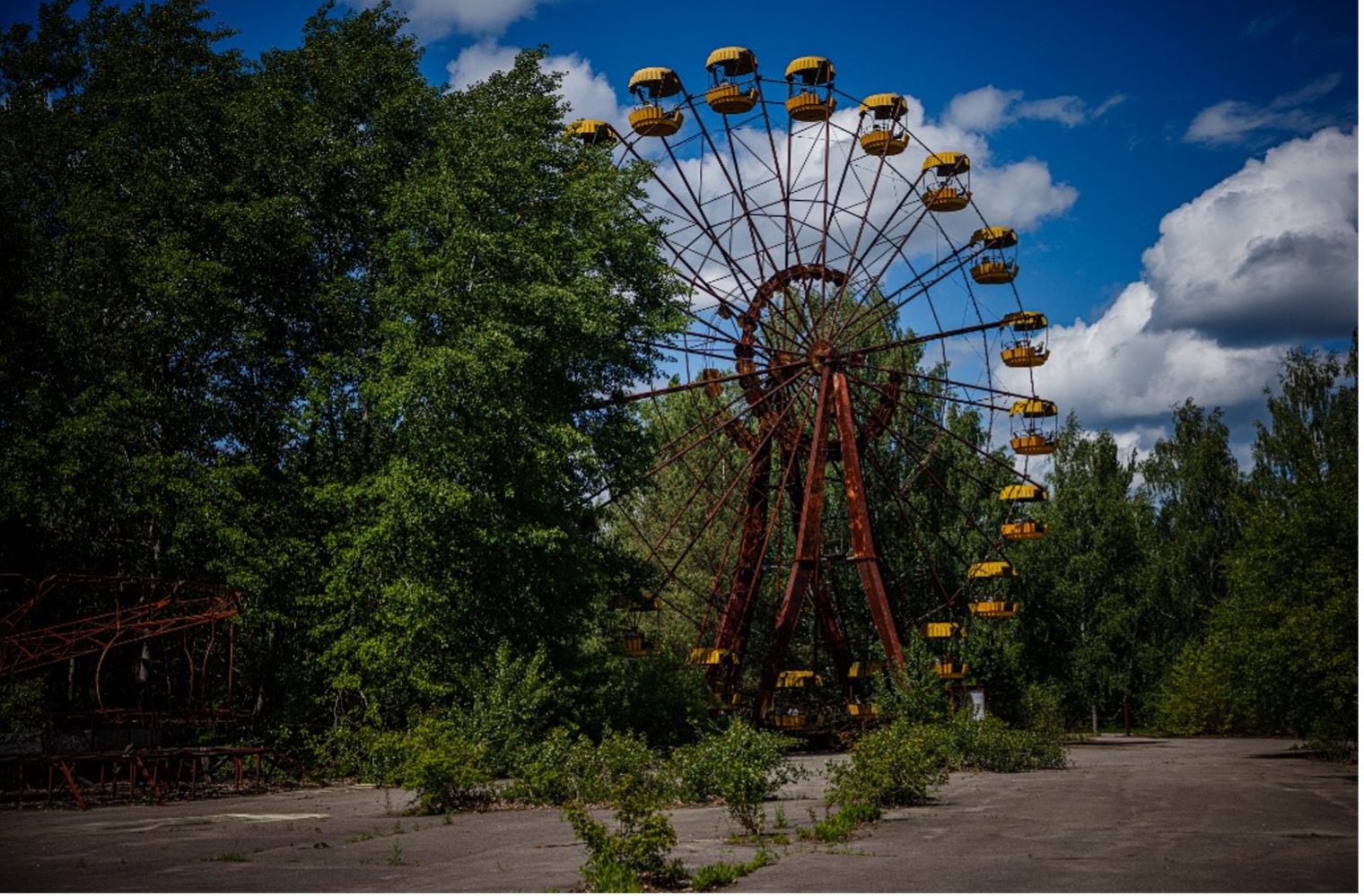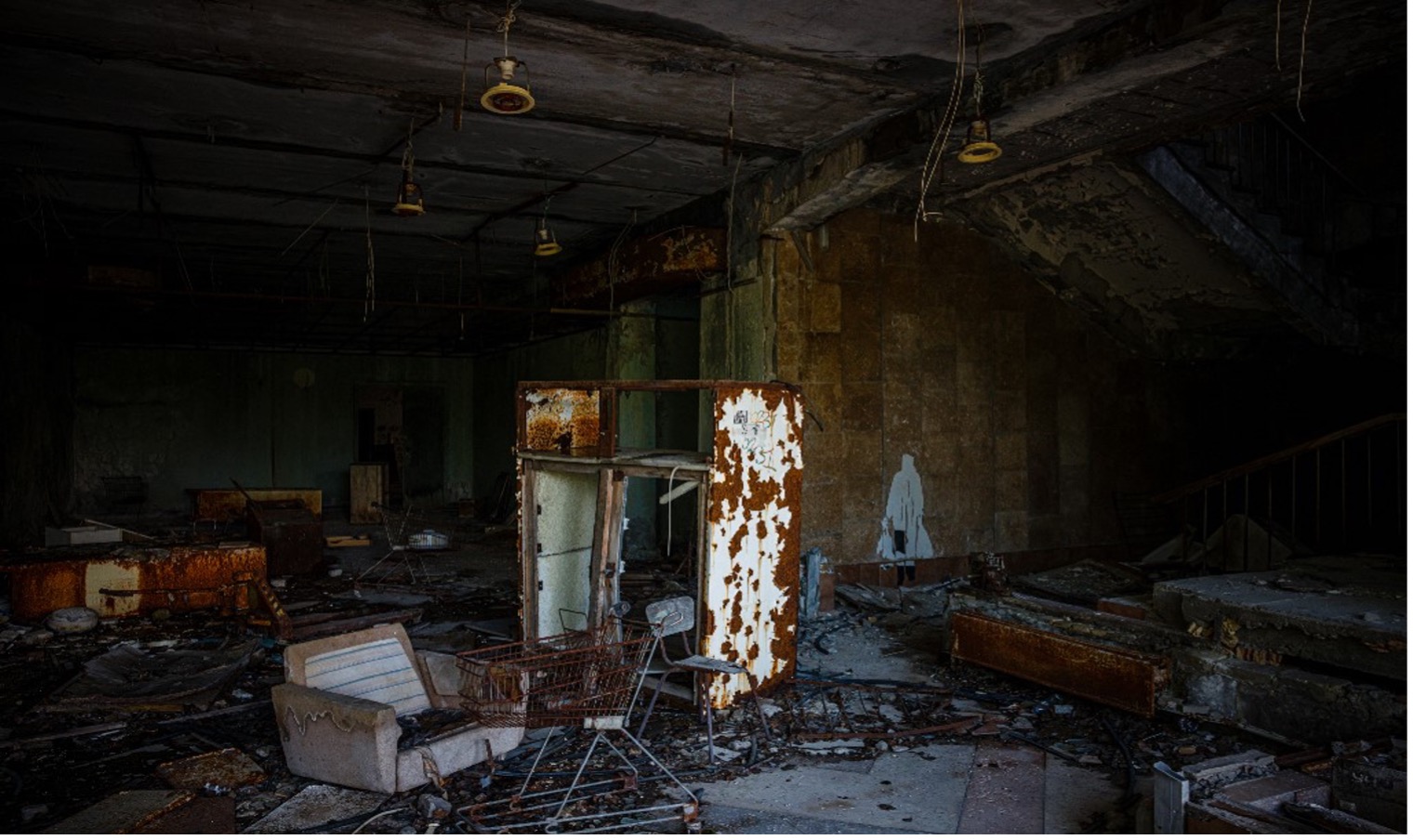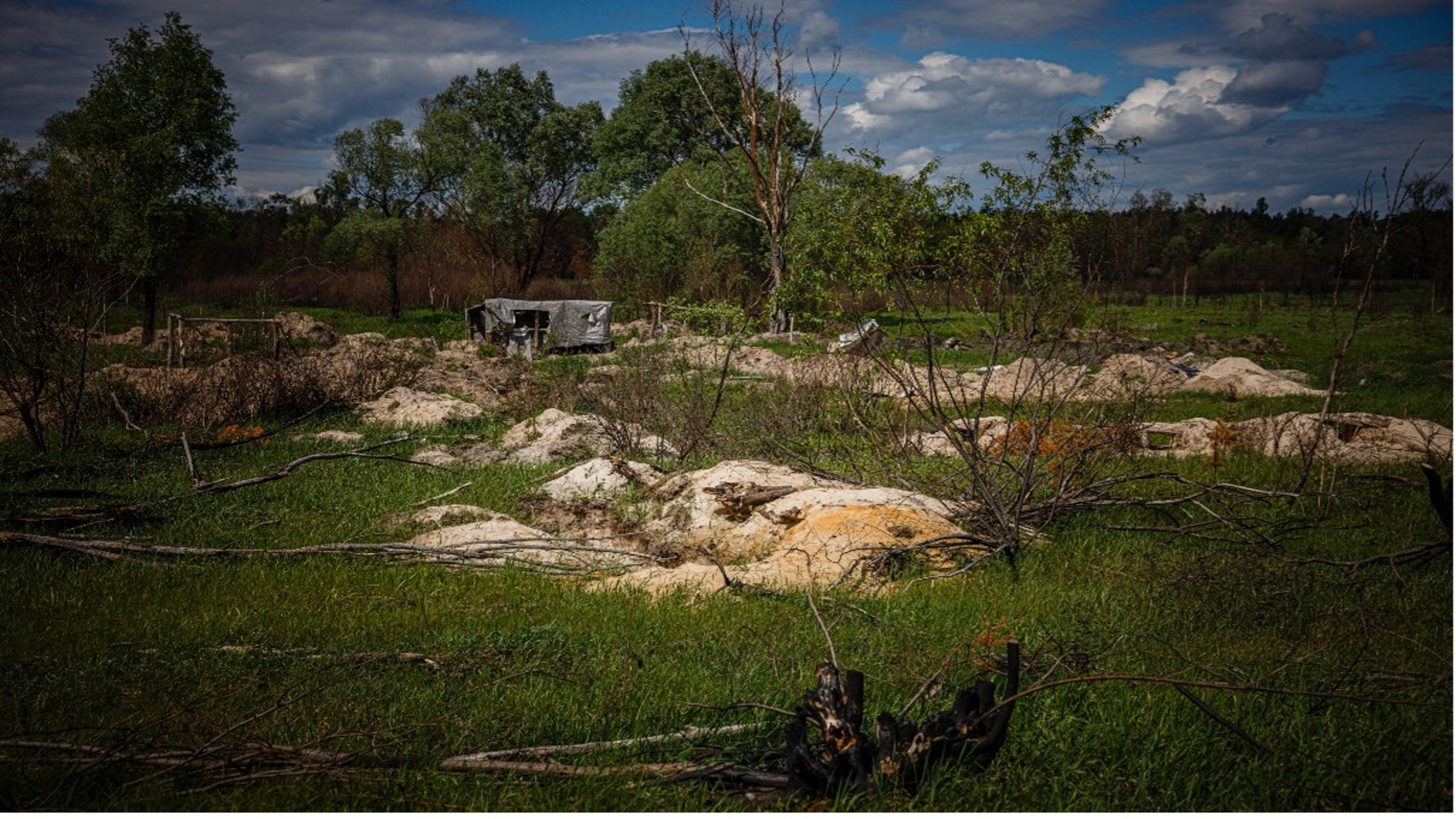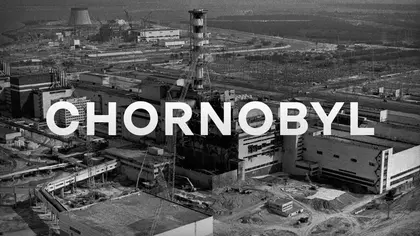Chornobyl disaster in 1986
On that fateful day, April 26, 1986, the world witnessed one of the most catastrophic nuclear accidents in history - the Chornobyl disaster, a tragic event that shook the world.
JOIN US ON TELEGRAM
Follow our coverage of the war on the @Kyivpost_official.
The Chornobyl Nuclear Power Plant, located in northern Ukraine suffered from a combination of design flaws, lax safety procedures and human error which led to a sudden and massive power surge in the core of reactor four. The resulting explosion and subsequent fire released a huge amount of radioactive materials into the environment.
The immediate aftermath of the disaster was dire. Two plant workers died immediately from the explosion, while 28 firefighters and plant workers succumbed to acute radiation sickness within weeks by the end of July.
The magnitude of the disaster became evident as the plume of radioactive fallout spread across Ukraine, Belarus and neighboring countries, contaminating vast areas with dangerous levels of radiation.
The USSR authorities initially downplayed the severity of the incident and attempted to cover up the scale of the disaster. It was only when radiation alarms were triggered at a nuclear power plant in Sweden, over 1,000 kilometers away, that the international community became aware of the magnitude of the disaster.
Even then, the Soviet authorities continued to downplay the severity of the situation. It took several days for the Soviet government to publicly acknowledge the explosion and the release of radioactive materials.

G7 Deal on $50 Billion Ukraine Loan Seen in October, Gentiloni Says
The full extent of the disaster only gradually came to light with the true scale of the environmental and health consequences emerging over time.
The delay in sharing information and implementing proper measures to protect the affected population, resulted in increased radiation exposure for many people, including the cleanup workers known as "liquidators", who were tasked with containing the radioactive materials and managing the aftermath of the disaster.
These liquidators faced life-threatening conditions and high levels of radiation exposure, and many suffered, both from immediate and long-term, health issues as a result.
Hundreds of thousands of people, including cleanup workers and local residents, were forced to evacuate their homes, leaving behind their communities, possessions and way of life.
Many suffered from acute radiation sickness and other long-term health effects. The true extent of the disaster's impact on human health may never be fully known.
An exclusion zone was established around the plant to limit human exposure to radiation, creating a ghostly landscape of abandoned towns and villages frozen in time.


The damaged reactor was quickly enclosed in a large concrete shelter which was erected by October 1986. It was only suitable as a temporary measure being neither strong nor durable. A longer-term solution was needed, which led to the international “Shelter Implementation Plan” in the 1990s to raise money for the necessary remedial work.
This eventually resulted in the construction of a massive steel and concrete sarcophagus, known as the New Safe Confinement, which was completed in 2019. It covers both the damaged reactor and the original concrete shelter and will prevent the further release of radioactive materials.
However, the area remains highly contaminated and will likely pose environmental and health risks for generations to come.
Chornobyl during the Russian invasion
On February 24, in the first hours of the Russian invasion, Russian troops seized control of the Chornobyl nuclear power plant, located a mere 16 km from the Belarus border. The 170 Ukrainian National guardsmen who had been guarding the plant were taken prisoner and confined to the basement of the station.
Russian troops allowed the engineers and technical personnel to continue their work before, two days later, specialists from Rosatom, the Russian state atomic energy authority arrived.
Despite the plant being decommissioned, it still houses a significant quantity of radioactive waste, which requires ongoing maintenance. Failure to comply with safety measures could have resulted in new and severe radiation leaks.
The Red Forest, located directly behind the plant, remains one of the most contaminated areas on Earth. It was the epicenter of the radiation during the 1986 explosion, causing the instant death of trees, primarily pines, and turning their needles red.
However, Russian soldiers were observed digging trenches and living in the forest for a period of time, seemingly unaware of the radioactive danger. The Ukrainian atomic agency, Energoatom, has raised concerns that these soldiers could have been exposed to dangerous levels of radiation.
 A photograph shows a trenches dug by Russian soldiers near the Red Forest which is ten-square-kilometre area surrounding the Chornobyl Nuclear Power Plant within the Exclusion Zone on May 29, 2022, amid the Russian invasion of Ukraine. AFP.
A photograph shows a trenches dug by Russian soldiers near the Red Forest which is ten-square-kilometre area surrounding the Chornobyl Nuclear Power Plant within the Exclusion Zone on May 29, 2022, amid the Russian invasion of Ukraine. AFP.
In front of the concrete sarcophagus that covers the damaged reactor, Russian soldiers established firing points protected by sandbags to guard against potential attacks.
On April 1, 2022, Russian troops left the NPP, taking their prisoners with them.
What could be the consequences of the accident at the occupied Zaporizhzhia NPP?
Ukrainian President Volodymyr Zelensky marked the anniversary of the Chornobyl disaster with a warning about Russia's use of nuclear power plants as a tool for "blackmailing" Ukraine and the world.
Reflecting on the tragic events of 37 years ago, Zelensky emphasized that Russia's invasion of Ukraine last year not only included the occupation of Chornobyl, but also posed a renewed threat of another nuclear disaster.
While Ukrainian forces were able to retake control of Chornobyl on April 1, 2022, Russian forces still maintain control over the Zaporizhzhia nuclear power plant in southern Ukraine.
As Europe's largest nuclear power plant, Zaporizhzhia previously accounted for 20 percent of Ukraine's electricity production. Despite the ongoing fighting and severe shelling in the area, the power station continued to operate in the initial months of the invasion, thanks to the dedicated efforts of Ukrainian engineers working to keep it running.
However, the Zaporizhzhia nuclear power plant has regularly come under fire, raising serious concerns about the safety and security of the facility. With the potential for further attacks and the risk of a nuclear disaster, President Zelensky stressed the need to prevent Russia from using nuclear power plants as a means of blackmail against Ukraine and the international community.
US Secretary of State Blinken has accused Russia of using the station as a military base to shell Ukrainians. At the same time, the fear of accidental hits on the nuclear reactors has deterred Ukraine from responding to the attacks.
Reports from the BBC have confirmed that the Russian army has deployed multiple rocket launchers, as well as other weapons and equipment, within the premises of the NPP.
While Moscow acknowledges the presence of its military at the site, they deny any strikes from the NPP's territory, instead accusing Ukraine of threatening the nuclear facility.
Shelling has, on occasions, severely damaged high-voltage transmission lines which increases the risk of over-heating of the reactors due to the shutdown of generators. If the power grid lines are cut off completely, it will become impossible to cool the reactors - this will lead to an uncontrolled chain reaction and a nuclear catastrophe.
Last summer, employees of Zaporizhia NPP revealed that they felt practically held hostage by the Russian army. On August 18, employees of Zaporizhia NPP published an appeal, to the world community urging action to be taken toprevent the irreparable.
The situation at the NPP is not only a grave concern for Ukraine but also for the international community, as any damage or destruction to the nuclear facility could have catastrophic consequences for everyone.
Ukrainian engineers continue to work at the NPP, but with reports of heavy military equipment and soldiers on site, the situation remains potentially catastrophic.
You can also highlight the text and press Ctrl + Enter






